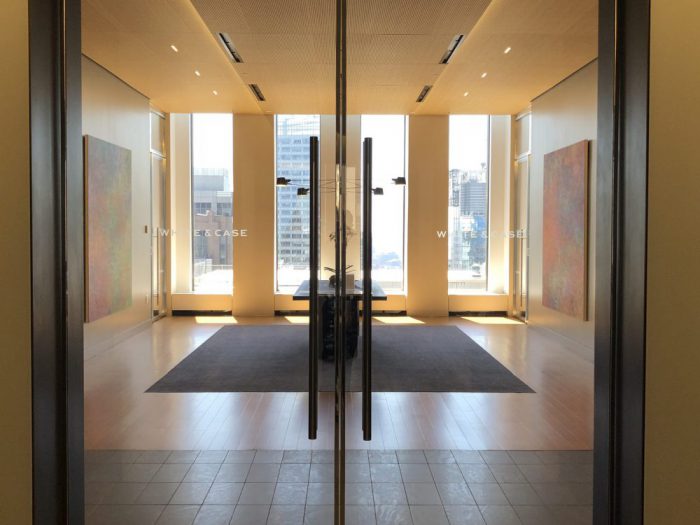This article was written for NYSERDA’s Commercial Tenant Program (CTP), which offers financial assistance for energy studies in tenant spaces. For more information on the program visit the NYSERDA CTP website.
A Case Study of White & Case LLP’s New Manhattan Office
Written by Kelly O’Connell, ERS for Zondits, December 10, 2018
White & Case LLP, a leading law firm based in New York City, used its recent office relocation as a chance to design a space that fosters collaboration, promotes employee well-being, and drastically reduces energy consumption. Working with NYSERDA’s Commercial Tenant Program, the firm partnered with Robert Derector Associates (RDA) to develop an energy model of the new space to determine the most viable efficiency measures and a financial analysis to determine which of those measures would be most valuable to the firm.
Commercial tenants can have more agency in leased spaces than one might suspect. By using mindful design and collaborating with the building owner, White & Case was able to save an estimated 1.8 million kWh per year in its space and reduce the building’s annual energy consumption by an additional 1.6 million kWh.
Jack Jenkins, RDA’s Energy and Sustainability Director, describes their coordination with the building management, “When White & Case leased the space, three of the floors were served by dual-duct HVAC: an energy intensive type of HVAC system that tends to simultaneously heat and cool the space it serves. As these were base building systems, they were not directly within the project’s control. However, because of the modeling effort, we were able to demonstrate to the building management team that an alternative proposal – replacing the dual-duct HVAC with more efficient VAV systems – would substantially reduce their energy costs (by approximately $250,000 annually). This convinced the building to undertake the work. It also eliminated the need for White & Case to install a second set of ductwork on these floors, reducing the cost of the tenant build-out.”
The energy modeling process also helped the design team determine a unique opportunity for substantial energy savings – estimated to be about 9% of their annual energy use – by strategically locating specific teams throughout the office space. White & Case’s litigation team tends to work long hours and was previously spread throughout multiple floors, requiring lighting and conditioning for an entire floor even with only a handful of employees present. The design consultant devised a new staff placement plan to group litigation and other late-working teams together on two floors. White & Case also created a system in which after-hours HVAC will only be provided if a request is lodged with their facility management team.
The results of the project have been extremely positive, both in increased staff satisfaction and in cost and energy reductions. In an interview with NYSERDA, White & Case representatives noted the following beneficial outcomes of the project:
- The decision to go with all LED lighting fixtures reduced maintenance costs.
- By convincing the building owner to convert the dual-duct HVAC system to VAV, they actually reduced the overall cost of the build-out. This was because the VAV system required about half the amount of ductwork compared to what would have been required had the system remained a dual duct system.
- Employee temperature complaints have decreased by 35%.
- The use of individual space heaters by occupants has been reduced.
- Consolidating practice groups on single floors allows better control and easier management of HVAC requests.
Reflecting on their experience, the White & Case Project Committee had these recommendations for tenants interested in pursuing energy efficiency upgrades in their own spaces: engage the MEP and energy engineers early on in the process to create an integrated design team, be open to implementing changes, and challenge themselves to push beyond their comfort to achieve more.
NYSERDA’s Commercial Tenant Program focuses on balancing energy savings with financial requirements and empowering commercial tenants to work with their landlords to facilitate energy efficiency in commercial spaces. The program offers various options which allow each participant the flexibility to meet their goals on their own budget. For more information about the program, check out NYSERDA’s website.
To learn more about NYSERDA’s Commercial Tenant Program, email ERS, NYSERDA’s Commercial Outreach Contractor, at commercialprograms@ers-inc.com.
Check out NYSERDA’s case study to see details on specific measures and the project’s impact on White & Case’s new space.


